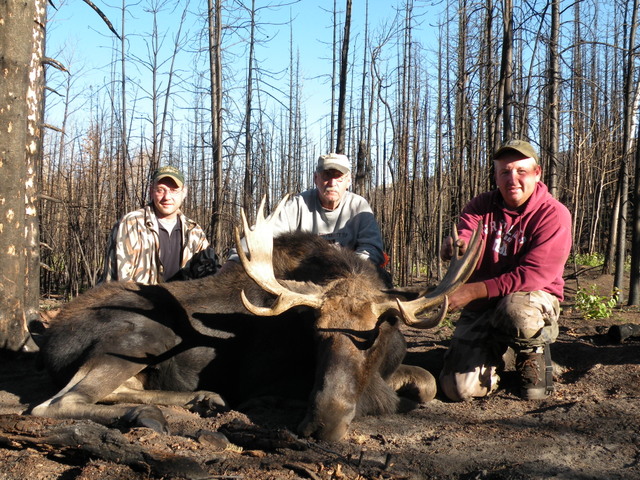Everything I posted is true. The homestead act is every bit as relevant as how many acres the states have sold since statehood. Lets look at how many acres the feds have sold as well. In order to be fair it needs to show the whole picture not just the part you want people to see. What is the deal of the century? Wolves? Wildfires? That has been a great deal for hunters. Its been great for state F&G's too when they have to cut tags and eliminate hunts and cant sell general tags because of the damage the wolves have done. I dont think we would have wolves if it managed by the states. The feds can declare an area "critical habitat" for some made up endangered species and close access any day.
Musket man, this post really isn't for you...since you've obviously drank a bit too much of the tea parties tea, this is more for the rest of the posters that may be following this thread looking for facts VS. fiction.
You mention wildfires being bad for wildlife, that's not true at all, and proves that you know absolutely nothing about fire ecology, plant succession, and how that all ties into forest health and ultimately wildlife.
Let me break the news to you that wildfires have happened for as long as there has been fuel, sources of ignition, and oxygen. Our forests evolved with fire, its not unnatural at all. The large beetle-kills that we're seeing, along with the fire activity to go with them, that is 100% how lodgepole forests are supposed to function. Lodgepole need stand level disturbance for reproduction, in other words either insect/disease outbreaks, fire, or a combination of both. Because of the elevation that lodgepole are found, the fire frequencies are very long, 80-300 years for stand replacing fire. Largely, lodgepole/alpine fir dominated stands are not that influenced by fire fighting efforts, and when they do finally burn, you cant do much to fight them, for lots of reasons (crown fires, poor access, etc.)
Other stands at lower elevations, say Ponderosa Pine, Douglas-fir, those stands historically had very frequent fire. These stands, absolutely have been impacted, in a NEGATIVE way by our "management". They are easily accessible via vehicle, closer to the urban interface, and easier to stop wildfires. The historic stocking rates for Pinus Ponderosa, were somewhere in the neighborhood of 8-20 stems/trees per acre. Now, these same areas sometimes have stocking in the 500-2000+ stems per acre range. Our management has vastly changed not only the stand density, but also the forest types, understory vegetation, forage potential, etc. etc.
By stomping out every fire via what you would consider "management" on these lower-mid elevation stands, we have made things much, much worse for wildlife. In many cases, to reset what a stand should look like, takes a lot of money. Thinning unmerchantable trees is expensive. Remember, we're talking about removing THOUSANDS of stems per acre in many cases, and having to do so periodically to recreate a natural forest.
How is plant succession related to all this.
In early forest succession, the species diversity of plant communities goes way up. Without the over-story trees, you have more diversity and younger plants. Younger plants, in particular those palatable to big-game, have much higher protein levels, minerals, etc. That is a good thing for our herds. I just read a recent article regarding the Bitterroot in Montana (wolf central BTW), comparing the East side elk with those found on the West side. The elk living in the heavily burned areas of the East Fork, have significantly higher fat, higher pregnancy rates, and higher calf survival than those on the West Fork. The reason is exactly what I just stated, the earlier succession of the forest/plant community on the East fork is much better for big-game.
Why do you think that the RMEF, MDF, etc. etc., in partnership with the USFS, States, Tribes, etc. etc. are all spending money on burning projects? If fire was the enemy of big-game, they wouldn't be purposely applying fire to the landscape. Before you go off about how "that's different" than naturally occurring wildfire, its not. I've been a professional Forester for nearly 20 years, fought fire for 9 years, and plant succession is the same in both prescribed fire and wildfire situations.
As to the wolves, no question they kill some elk. But, in the States that have a bulk of them, MT, ID, and WY...you can kill 2-3 elk per year in all of those states. If wolves were having the impact that you claim they do, then why can we all hunt multiple elk per year? Year before last I shot 2 elk in Montana, 3 in Wyoming. Since I moved to Wyoming in 2001, I've shot 28 elk.
Finally, the dead elephant in the room that you're ignoring in regard to forest management, is that management costs money and a lot of it. Money that the States simply do not have, and money that our elected officials are NOT willing to provide to the Federal Land Management Agencies to properly manage. We cant manage without funding...period.
The best thing you can do, if you really believe that we need to manage our forests better, is to contact your national representatives and tell them to fully fund the Land Management Agencies.


